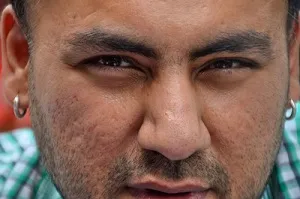All Things Design; with Cleartrip’s Chief Designer, Sunit Singh
One of the cleanest and the most clutter free of Indian sites, Cleartrip serves as a benchmark in many respects when it comes to design. Sunit Singh, a graduate in fine arts from the Sir J.J.School of Art and a post graduation from Industrial Design Center at IIT Mumbai, has been obsessed with design ever since he started working for Paper Plane Solutions. From there on, he moved on to Burrp and Yahoo! and is now at Cleartrip. He’s been the Chief Designer at Cleartrip for two years, and has mainly led the mobile user interface and user experience of Cleartrip’s products. I caught up with him to explore more about this fascinating world which is slowly starting to get its dues in India.

YS: You’ve been associated with some of the latest and best names in India and have experiences leading design for these companies. How would you compare them and what would you call your most satisfying stint?
SS: To start off with, I’d like to say that I’ve liked to work in smaller organizations and hence my view might be biased, but that is how it is. I have a penchant for smaller companies ever since my graduation from Sir J.J. School of Arts. Comparing all the 4 organizations I have worked at, I’d put Burrp and Cleartrip as my most satisfying work stints. Burrp, mainly because it was only a 4 membered team and I joined them when the momentum was building. Everyone knows how it has grown and come to where it is now. Paper Planes was my first stint and it gave me a lot of exposure and new ideas. I did not stick around at Yahoo! because one doesn’t have much control is such a huge organization. Designing for Cleartrip has been so much fun!
YS: Talking about the culture at these places, what is the single most thing you think a designer needs to take into consideration?
SS: Many companies lack the understanding of design and design metrics. The battle is half won when your subordinates understand design and its importance. Design is an iterative process, so the refinement never stops till the last day. Involving the team in the design process and bouncing prototypes helps in validating your decisions & identifying fundamental issues in the early stages. It’s important to be able to respect the opinions of your subordinates at the same time be focused on what the user needs.

YS: Great! Tell us a bit about your experience with Cleartrip.
SS: Well, I joined Cleartrip 4 years after its inception. Much of the work was done, but since designing is a continuous process, there are changes happening every hour. We’ve stuck to the philosophy of keeping it clean and incorporating only the necessary features. I’ve mainly led the mobile front and the results have been accepted well so far. The smaller the team is, the more hands-on is the process. Also, personally speaking, working closely and having a sense of control over the working process is very important for me. I’m open to all suggestions, that’s how I like to work and I definitely believe it gives more definition to a product.
YS: Moving onto User Experience(UX) specifically, what are your views here? Where do you think India is placed in terms of UX?
SS: Today, the Indian user is much more evolved than 5 years ago. Users are exposed to the best products (talk about the iPhones or high performance web applications like Gmail) they experience good design everyday - and they are expecting the same quality if not better from local services or products. You have to invest in building a good user experience if you want to stay in the game. And UX becomes an extremely important component of designing, especially with mobile computing coming to the fore. There are a lot of opportunities in India, but one significant thing where we lack in is alignment.The freshers coming in are not in sync with the industry requirements. Dreaming big and being ambitious is always good, but one needs to solve a lot of the existing fundamental problems in the market. There is a sort of a disconnect between the industry requirements and the industry-ready freshers that needs to be taken care of.
YS: What do you think needs to be done to improve this situation?
SS: There is no clear solution to this question, though broad minded need to open up their horizons and this would definitely help understanding designing concepts better. Designers need to be more hands-on in their approach to projects and look at the smaller problems that need to be solved. These little solutions will culminate into a grand project one day. Also, we don’t give enough thought on execution; this is one more aspect which needs to be worked upon. Basically, we need more craftsmen in the internet space.
YS: Who are the people in the industry that you look up to?
SS: Apart from Apple Devices design, I am starting to lean towards web developers and front end design engineers. I follow a lot of the Western designer folks. Can't really point to one person as you get to learn something new every other day.
Here's a twitter list you might want to follow and some book recommendations from Sunit:
- Don't make me think by Steve Krug
- The design of Everyday things by Donald Norman
- A List Apart is a great resource for everything web (right from Design, Code & Content)
- Web Standards Solutions by Dan Cederholm really shaped the way I write HTML/CSS
Read more about design from likes of Giles Colborne and Arun J.







